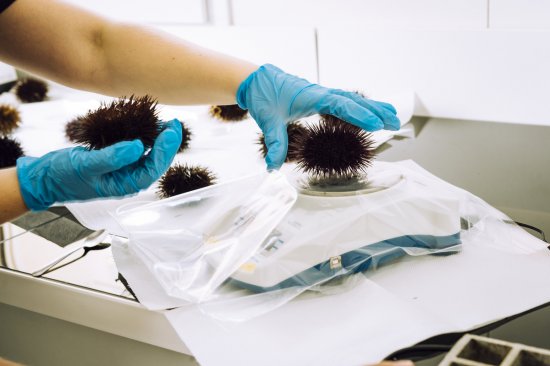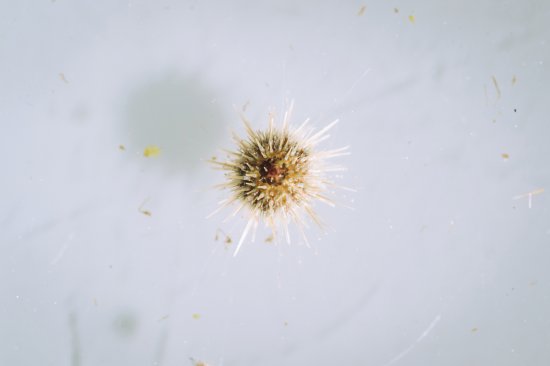
© Sylvain SLABY / Corentin SPRIET / Jean-François BODART / Sébastien LEMIERE / Alain LEPETRE / Matthieu MARIN / UGSF / CNRS Photot
Reference
20170084_0014
Têtard de Xénope lisse âgé de 6 jours observé à la loupe binoculaire
Six-day old tadpole of the African clawed frog, Xenopus laevis, exposed to pollutants, observed using a binocular magnifying glass. Here, alcian blue staining has been used to highlight its cartilaginous structures. This labelling, together with an automatic biometric measurement protocol developed specially for this model, makes it possible to evaluate precisely the morphological impact of exposure to environmental contaminants. The tadpoles are exposed to contaminants such as cadmium, lead or copper (metals), or glyphosate or deltamethrin (pesticides), for example. After image acquisition, processing, segmentation and morphological analysis are performed using an ImageJ plug-in developed specially for this model. In addition to a qualitative description of any malformation, this automatically provides a large amount of quantitative information (length, perimeter, distance between the eyes, etc.). Recent studies have shown that 41% of amphibian species are under threat. Their skin is highly permeable and their contact with the water means they experience particularly high exposure to pollutants.
The use of media visible on the CNRS Images Platform can be granted on request. Any reproduction or representation is forbidden without prior authorization from CNRS Images (except for resources under Creative Commons license).
No modification of an image may be made without the prior consent of CNRS Images.
No use of an image for advertising purposes or distribution to a third party may be made without the prior agreement of CNRS Images.
For more information, please consult our general conditions














